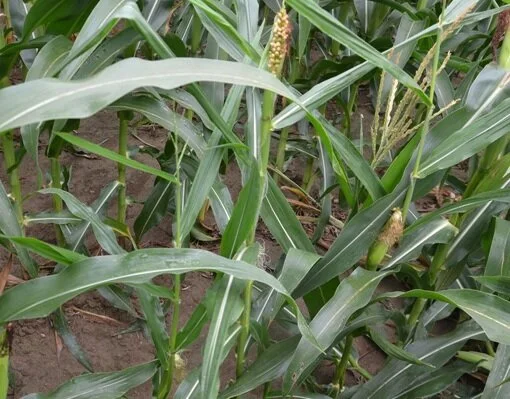Abnormal is normal in 2019 fields
Oct. 11, 2019
The Corn Watch ’19 field produced a plant with an ear on top instead of tassel. This same plant also tried to silk and produce a regular shoot.
Very little was the typical “normal” in 2019: fields couldn’t be planted in the spring because they were too wet, if not flooded. Some overnight temperatures in June dipped to the 40s, causing enough chill injury to prevent corn from germinating. Then the rain stopped completely it seemed.
While the unpredictable weather was not expected, some results from it were. It’s nothing new that flooded areas can lead to diseases; corn smut isn’t difficult to find in fields this year, although it likely won’t impact yield.
However, some results from the weather were as unexpected as the weather itself. Take a plant from the end rows of the Corn Watch ’19 field as an example. It produced an ear without husks on top of the plant instead of a tassel.
What is it?
“It doesn’t have the typical appearance of crazy top (an abundance of leafy structures by the tassels caused when emerged corn is standing in water for a day or two), but obviously something caused the plant to do something besides what it should have done,” said Dave Nanda, Ph.D., SGD director of genetics.
The soil was saturated in early June, soon after emergence, with a ponded area near this plant. Also, being on an end row, it could have been injured by wheel traffic during herbicide application.
“This is another example of what can go wrong when conditions are outside of what’s normal,” Nanda said. “Corn plants go to great lengths to try to reproduce. They want to make babies. Note that there are some kernels on this out-of-place ear. This plant didn’t produce pollen, but the ear must have silked and picked up pollen from its neighbors.
“Also note the plant was attempting to put out an ear shoot in the normal location with silks. Even though it was covered with serious defects, it wasn’t giving up on trying to produce progeny. That’s one of the most amazing things about corn plants — they try as hard as possible to produce viable offspring.”
The Corn Watch ’19 field is sponsored by Seed Genetics Direct. Reports on the field’s progress are provided all season (#CornWatch19); read the latest Corn Watch ’19 articles here.
.

